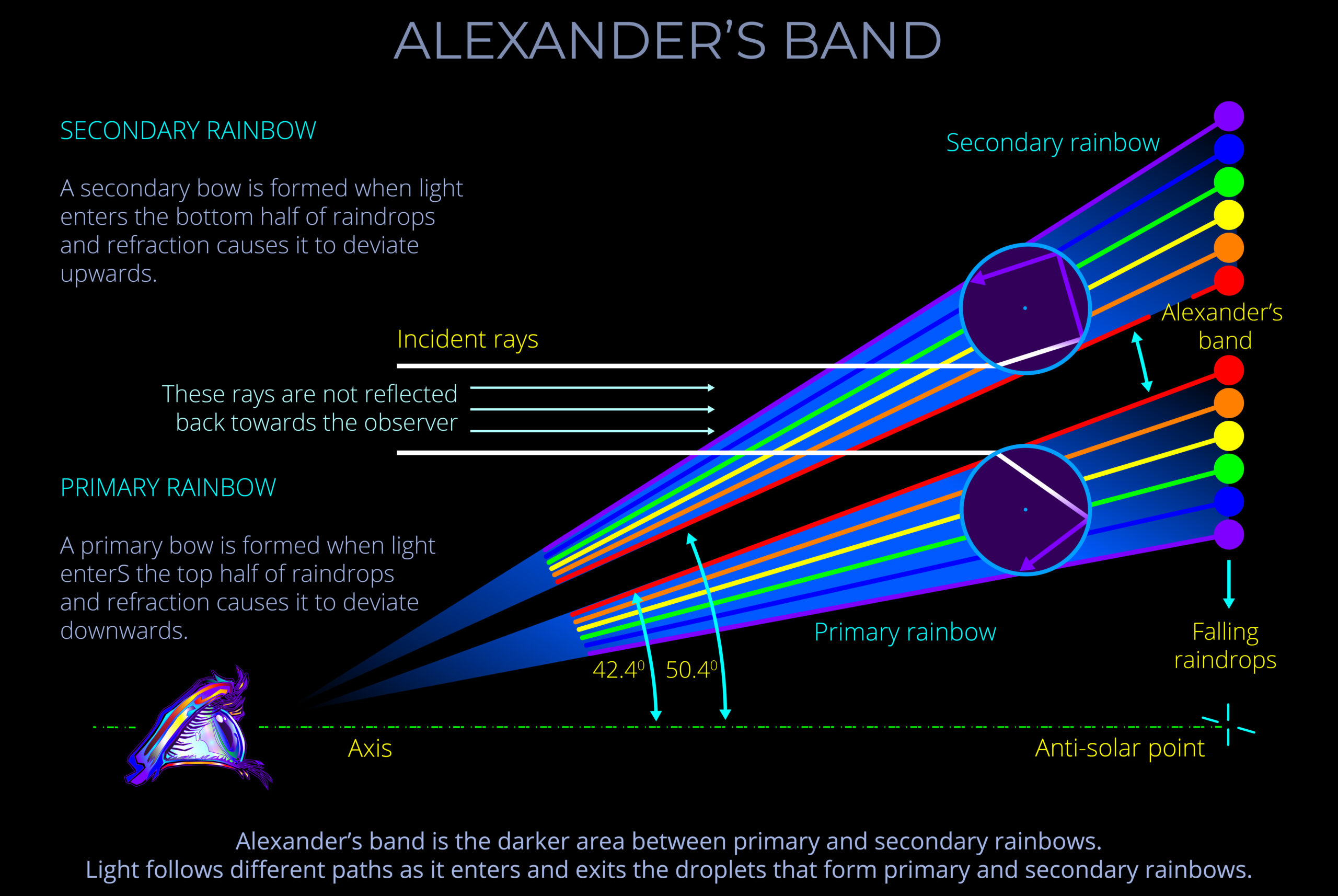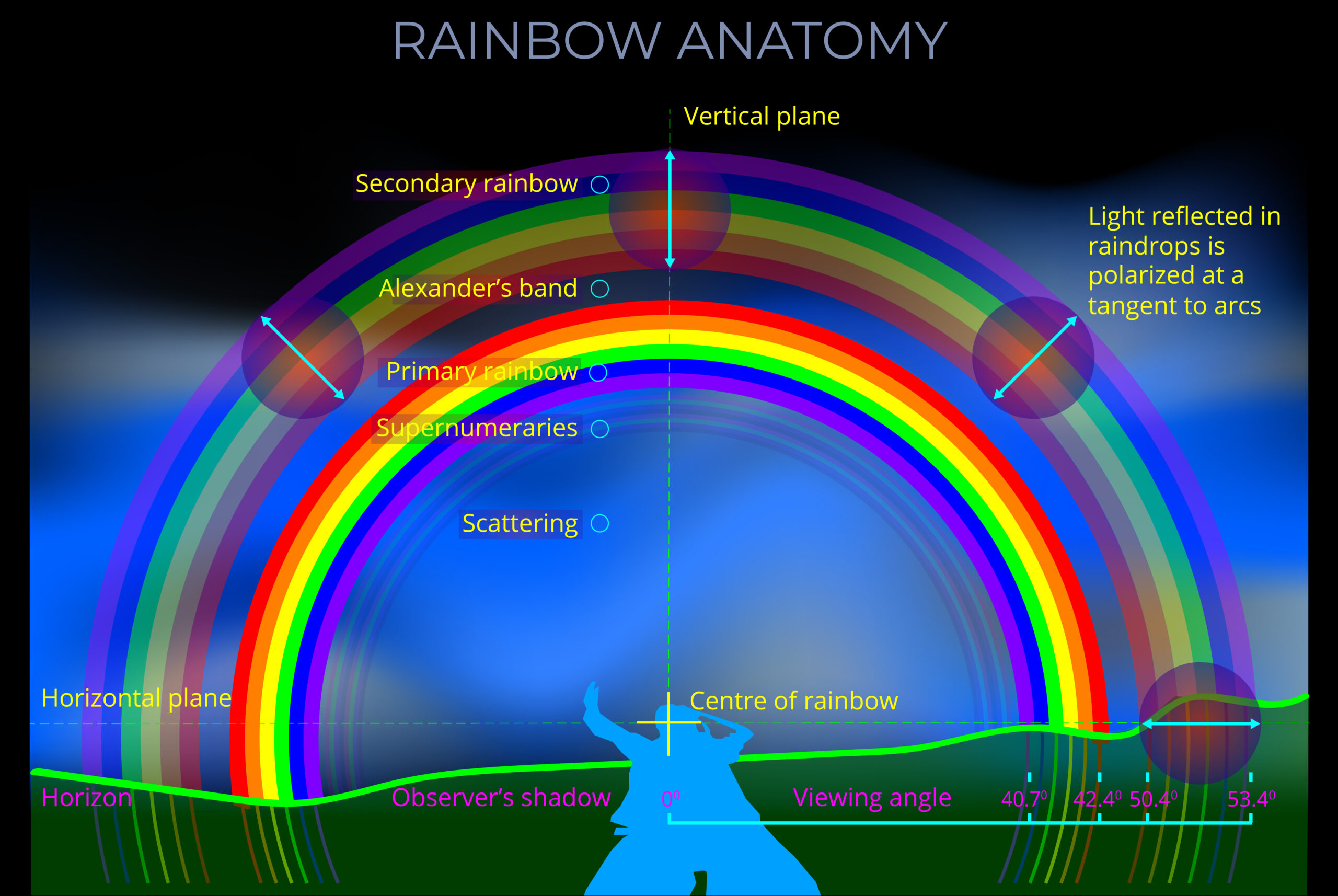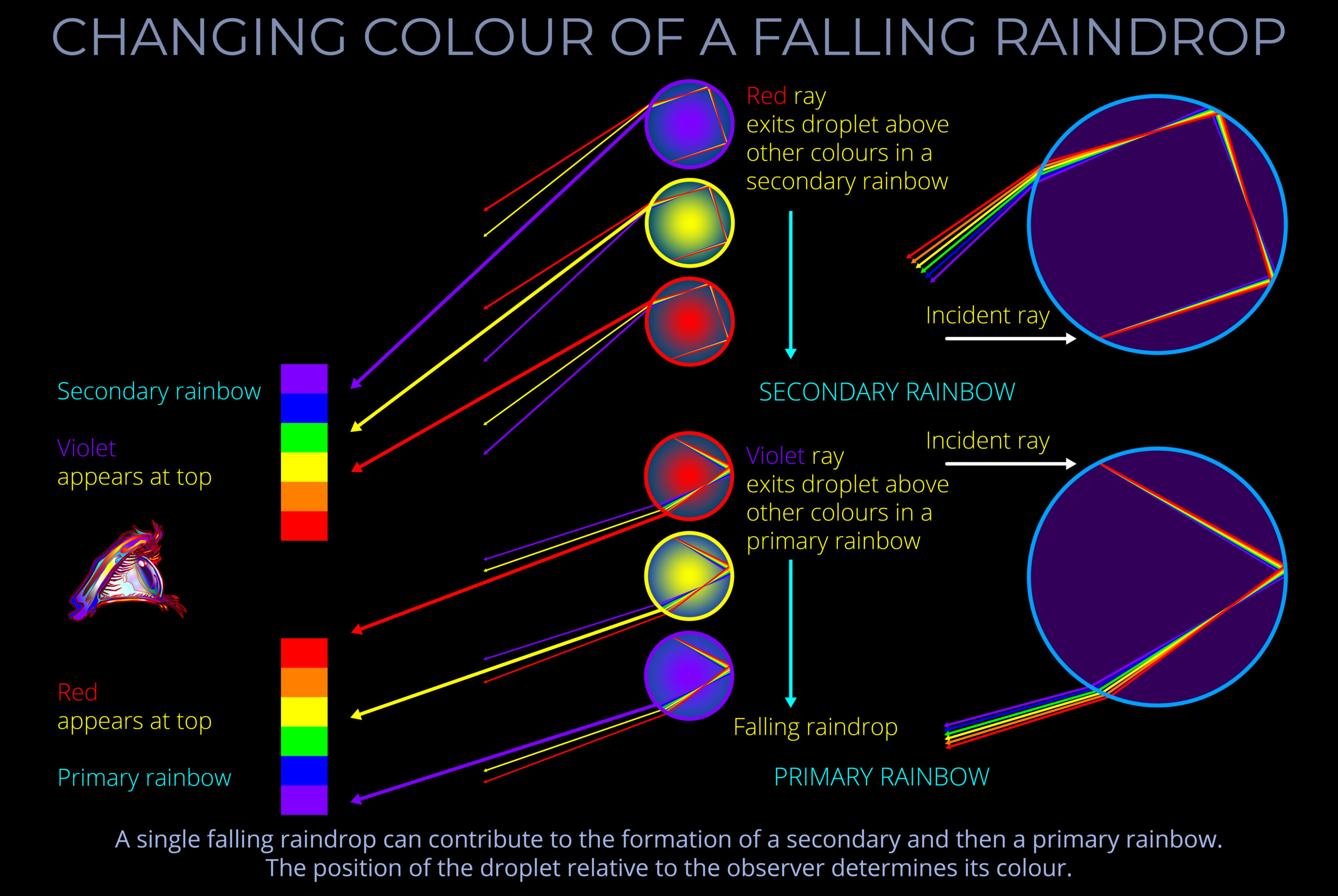- The areas of sky around a rainbow may appear blue or grey depending on weather conditions and cloud cover. However, these areas outside, inside, and between the primary and secondary rainbows tend to have distinct tonal differences from one another:
- The area inside the arcs of a primary rainbow always appears tonally lighter than the surrounding sky.
- The area outside primary and secondary rainbows appears darker.
- The area between primary and secondary rainbows appears the darkest – this is Alexander’s band.
- Alexander’s band can be explained by the fact that fewer photons are directed from this specific area of the sky toward an observer.
- The raindrops that form a primary rainbow all direct exiting light downwards towards an observer so away from Alexander’s band.
- The raindrops that form a secondary bow all direct light upwards, so away from Alexander’s band, before a second internal reflection directs light downwards towards an observer.
- Alexander’s band is named after Alexander of Aphrodisias, an ancient Greek philosopher who made observations and comments about this phenomenon in his writings.
Related diagrams
Each diagram below can be viewed on its own page with a full explanation.



